Profit Margin vs Markup

Profitability is one of the most important aspects of your business. After all, if you’re not profitable, you won’t be in business very long.
Determining how to price your goods and services is key to maximizing profitability. Often, businesses will price their items based on the standard by which they measure the profitability of their business. Two ways in which businesses measure profitability are Margin and Markup. The terms are often used interchangeably, but they are very different. LOU uses Profit Margin as this seems to be the more common method.
Let’s look at the two measurements of profitability to better understand them.
Profit Margin (Used by LOU)
A profit margin, or gross margin, is the revenue (profit) you make after Cost of Goods Sold (COGS).
The profit margin is a percentage of the gross revenue earned on a product. To find the number, you need to start with your gross revenue and subtract your COGS, then divide that number by the gross revenue.
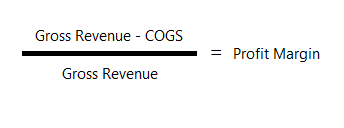
Let’s say you have a cartridge filter which you buy for $422.23 and you sell it for $633.35.
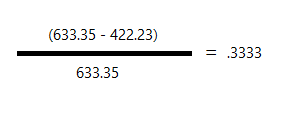
Convert .3333 into a percentage by moving the decimal to the right two spaces and you have 33.33%.
Your profit margin on the cartridge filter is 33.33%. This means you’re making $.33 on the dollar for this SKU.
Markup
Markups indicate how much greater your selling price is over your COGS.
To find the markup, start with your gross revenue and subtract your COGS, then divide by COGS.
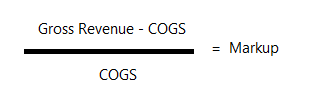
Your cartridge filter costs you $422.23 and you sell it for $633.35.
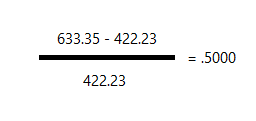
Convert the .5000 to a percentage by moving the decimal to the right two spaces and you have 50.0%.
Your markup on the cartridge filter is 50%. This means you sell the cartridge filter for 50% more than the amount you paid for it.
Unsure of your Gross Profit?
If you’re unsure of your Gross Profit and unable to use the equation above, you can convert your markup to margin using the following equations:
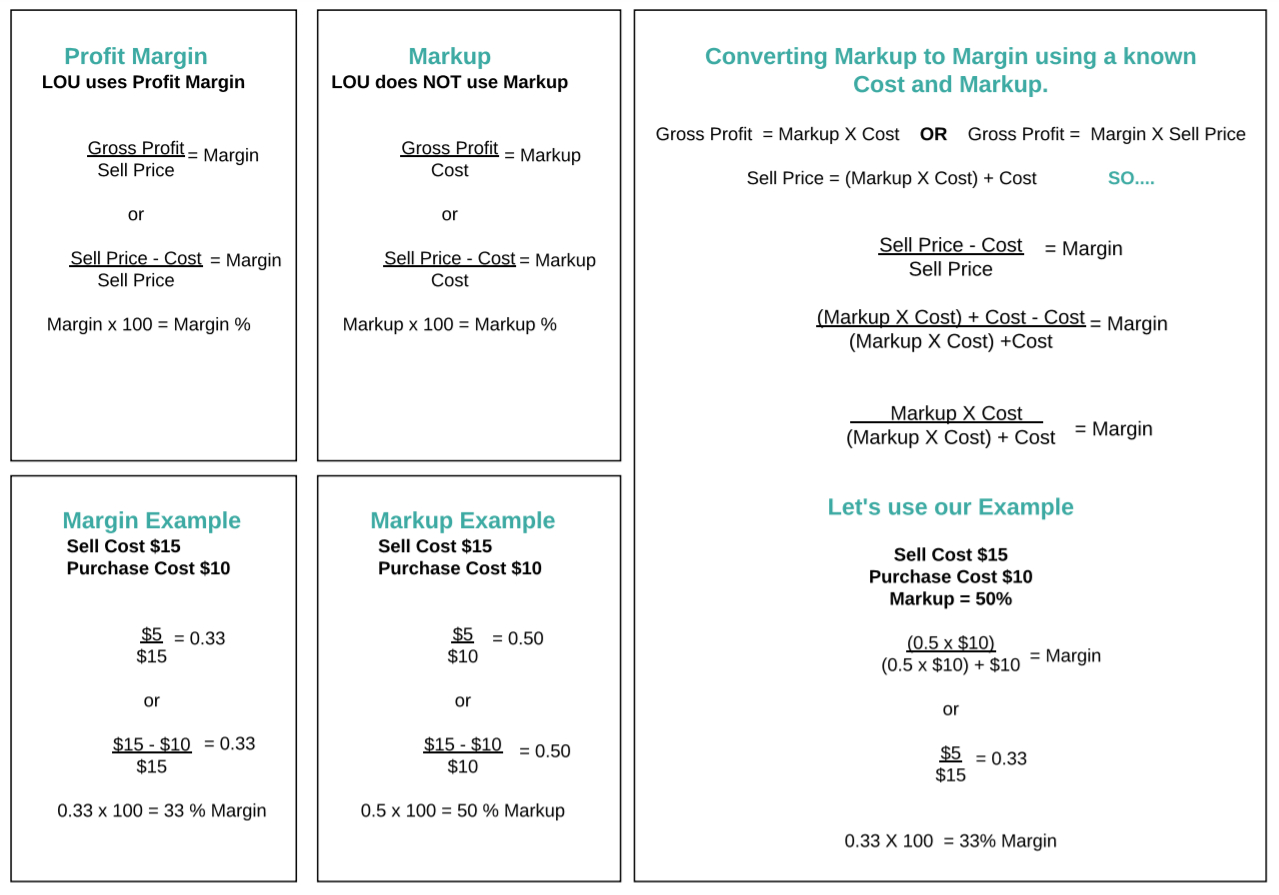
REMEMBER! LOU allows you to choose between Profit Margin or Fixed Pricing. LOU does not support Markup pricing.
